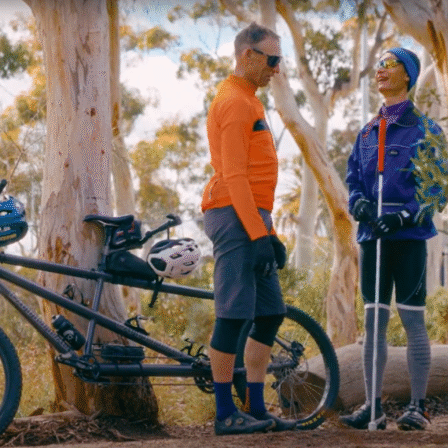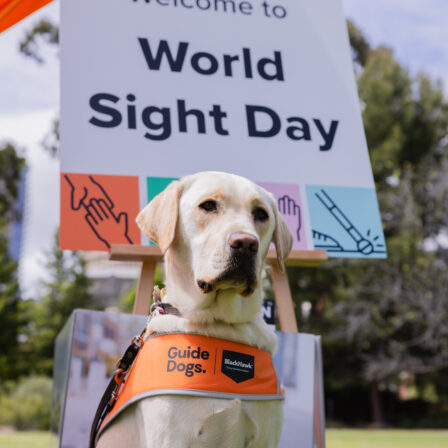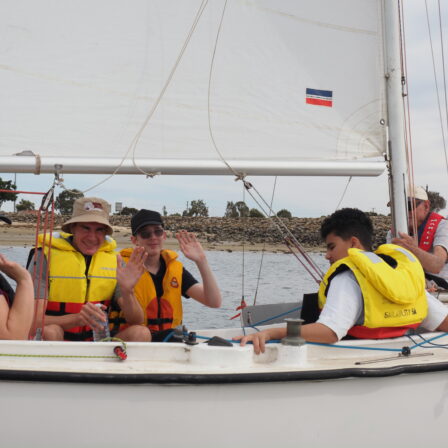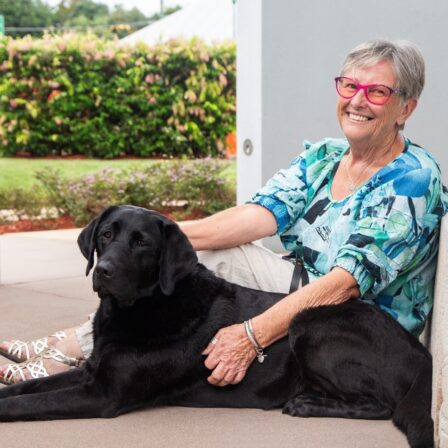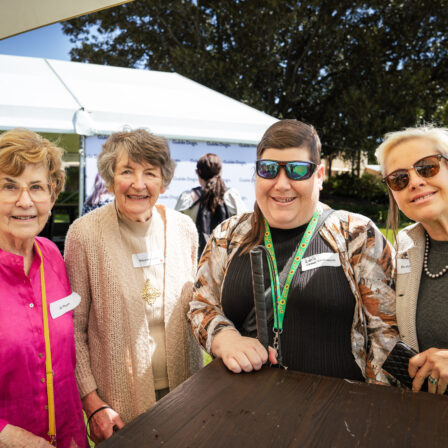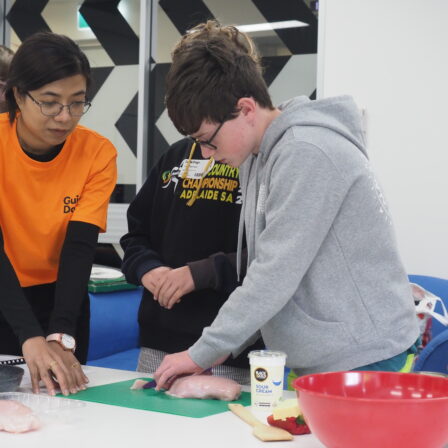News
Community urged to keep “Eyes Up” from mobiles
A year ago Jasper Cleland traded his white cane in for a red one so people could see it better and avoid bumping into him.
It helps to some extent but he still has people bumping into him while walking either with his cane or being guided by his partner.
Now Jasper is joining Guide Dogs Australia on World Sight Day in the lead up to International White Cane Day this weekend in a campaign to encourage people to keep their “Eyes Up” from their mobile phones.
Constant use of mobile devices is now part of everyday life, but alarming new statistics have revealed it’s a danger that impacts many Australians who are blind or vision impaired every time they leave the house.
A recent national survey conducted by Guide Dogs Australia and VisAbility revealed that almost half of all people who use a white cane were bumped into at least once every time they were out, with almost 60% of cane users reporting the incidences were caused by people engrossed in their mobile devices.
Jasper says crowds in busy places such as Rundle Mall pose the biggest problem.
“There is no traffic in Rundle Mall and people feel they are safe there because there is no traffic,” Jasper said. “So they can just walk around with a phone in front of their faces and are in their own little bubble.
“I have had people walk into me and some have even told me to watch out and sounded annoyed with me!”
The 29-year-old has been blind from birth because of Retinitis Pigmentosa and can only see shapes and the outline of objects. He also has moderate hearing loss in both ears which hampers his ability to detect people near him.
Jasper says being bumped into is unsettling as he can become disorientated. That hampers him navigating himself as he needs to be aware of the line of a wall, or spot tactile markers, kerb ramps or landmarks on familiar routes. If disorientated he needs to wait until people are moved on and relocate landmarks.
He encourages people to look up and be aware of their surroundings.
“As well as looking up, please look up long enough to be aware and take in what you are seeing,” he said. “Remember you are the one who is able to do so.”
The white cane is the most widely used mobility aid among people who are blind or have low vision. A cane enables a person with vision loss to move freely and detect if there are any potential dangers in front of them. If their cane gets broken, they lose the ability to judge what’s ahead.
The Chief Executive Officer of Guide Dogs SA/NT, Aaron Chia, said the “Eyes Up” campaign ahead of International White Cane Day on Sunday October 15 calls on members of the community to look up from their mobile devices when they’re walking to help those who are blind or vision impaired stay safe.
“Our instructors work with white cane users to teach them the skills they need to get around their communities safely and independently, but unfortunately there are certain environmental factors, like moving people that they often can’t identify until it’s too late,” Mr Chia said.
“Taking small actions while using your mobile device can make a big difference to help reduce the danger to those who are blind or vision impaired.
“We all have a role to play in helping to make sure people who are blind or vision impaired can get around their communities safely and confidently, just like everyone else.
“In this case it can be as easy as waiting until you reach your destination to check your mobile device, or using more caution by slowing your pace and looking up often if you have to use your device while walking.”
Watch Guide Dogs Australia’s powerful video from the perspective of a White Cane user.

